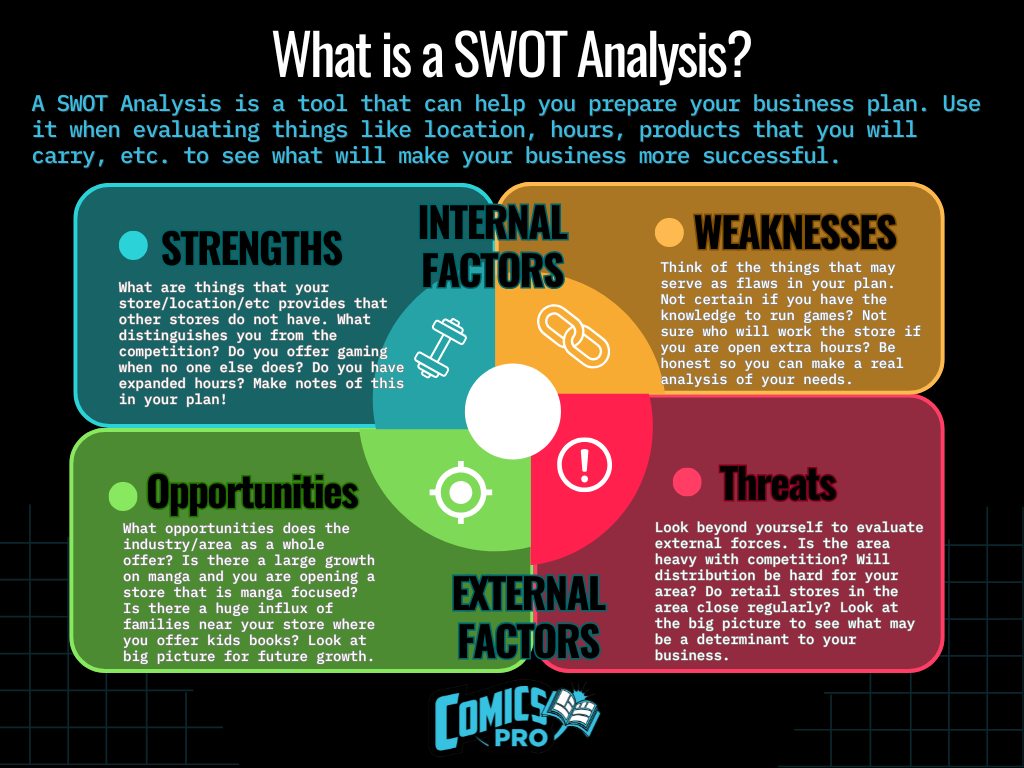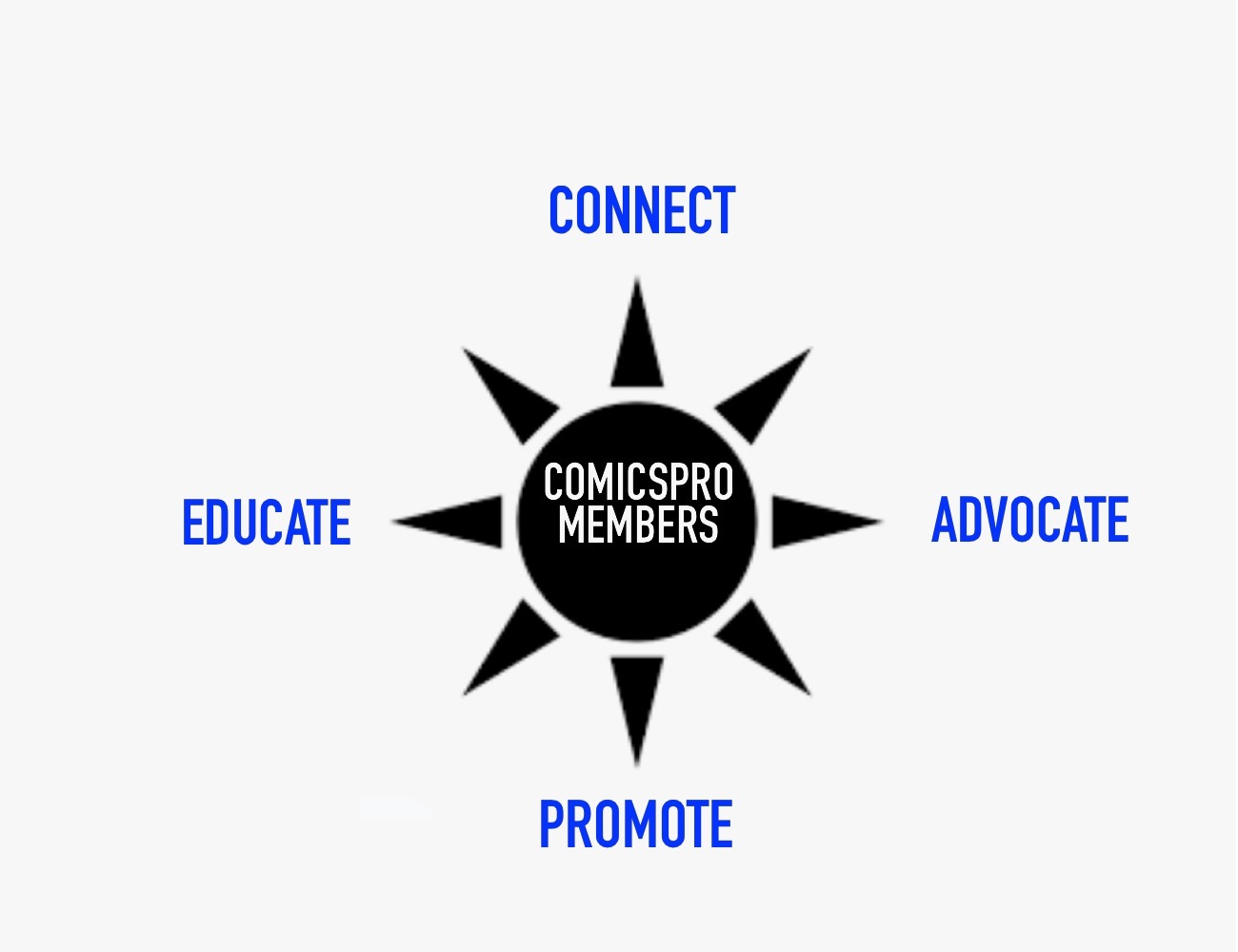Owner Resources
- So You're Thinking of Opening a Comic Store?
- Doing Demographic Research
- Choosing a Location
- How to Order (Starting Out)
- Bookkeeeping
- Tax Guides
- Cultivating Relationships with Publishers
- How to Create a Grand Opening Event That Draws People In
- Partnering with Other Businesses For Events
- Brand Development
- Social Media Marketing
- Building a Newsletter
- Creating Relationships with Schools and Libraries
- Will Eisner Spirit of Comics Retailer Award
- How to Hire a Manager That Fits Your Needs
- Interviewing Tips and Tricks
- Harassment Policies and Procedures
- Payroll Tips and Tricks
- Downloadable Employee Handbook Template
- How to Set Your Business Up to Reduce Loss from Day One
- Cash Handling Procedures and How to Train Others In Them
- Associate Discount and Shopping Policies
- Reviews and Assessments
- Cultivating Net Producers
- Training Managers to Be You
- Building a Culture in Your Store
- Handselling (2025 ComicsPRO Annual Meeting)
- Inventory: Diversifying, Quantifying and More (2025 ComicsPRO Annual Meeting)
- Brand Development & Marketing (2025 ComicsPRO Annual Meeting)
- Curating a Manga Section (2025 ComicsPRO Annual Meeting)
- Employee Management (2025 ComicsPRO Annual Meeting)
- Succession Planning (2025 ComicsPRO Annual Meeting)
SO YOU’RE THINKING OF OPENING A COMIC SHOP…
You’re browsing some books or dreaming about the future and think to yourself: “What if I opened my own comic shop?” At ComicsPRO, we’ve all literally been there! It’s an exciting thought, but it can quickly become overwhelming. This sheet will help you think through a few of the most important questions before you get started.
Preliminary Research
Before really beginning your journey you want to know as much as you can about the area you are planning to put your shop into, and the people who will likely make up your customer base. Consider the following:
Demographics.
What is the age distribution of nearby populations? What are the income brackets? What is the employment landscape like? How easy is it to move around the area with or without a car?
Economic & Population Growth.
Is the population growing over the years or declining? What does that growth rate look like? Are there a lot of businesses moving to the area, or are more businesses closing than opening?
Safety & Comfort.
What is the reputation of your location? Are there (correct or not) perceptions about the area that may deter customers from visiting? Will you need to create specific plans for crime?
Competition.
Look at the other stores that you may consider your “competition.” How will your store differ from theirs?
When you have completed this research, you will be able to generate a SWOT Analysis (Strengths, Weaknesses, Opportunities, Threats). Banks, insurance companies, and other lenders usually expect to see a SWOT analysis along with demographic research before providing financial support.
Location
You probably have an idea of what city or area you want to open it in. But narrowing down a specific location is much harder! How do you know what location is right for you?
Destination vs. Shopping Center.
There are “pros” and “cons” to being part of a shopping center or being a more independent destination. What is most important to you? What would you rather not have to deal with?
Distance from Competition. There are no hard-and-fast rules regarding how far you should be located from another comic shop. You will want to consider things like:
What is the population density of the area I am looking to open a shop?
What are the commuting patterns of my prospective customers?
How will my stock differ from other nearby shops?
Customer Base
You will always have many types of customers looking for all kinds of books. We all want to make every kind of customer happy, but the truth is we often have to make difficult decisions due to cost, space, and availability of certain product lines. Determining your target customer base will help you prioritize your values and will guide important decisions about inventory, location, staffing, and more.
The most common comic shop customers are:
The Collector loves a shop with a ton of backstock that is organized, priced, and always replenishing.
The Reader loves a shop with book clubs, tons of staff recommendations, and staff that’s willing to chat.
The Speculator loves a shop that carries a lot of Big Two books (Marvel and DC) and variant covers in pristine condition.
The Family loves a shop with a robust All-Ages section that is welcoming to even the antsiest kids
The Casual/Newbie loves a shop that doesn’t make them feel judged for their lack of knowledge.
The Manga Fan loves a shop that carries a wide variety of manga, and especially loves seeing early volumes of ongoing series that the big book stores don’t carry anymore.
Next Steps:
There’s a whole lot more that goes into opening a comic shop, from thinking about your open hours, to ordering fixtures, to making decisions about staffing.
But don’t worry: ComicsPRO has you covered. To find more in-depth resources about opening a comic shop, email Shannon at comicsproedu@gmail.com to set up an appointment.
ComicsPRO is a not-for-profit trade organization dedicated to the progress of direct-market comic book retailers. Our goal is to promote advocacy, education, and opportunity for their members and, in turn, for all storefront comic book retailers. Find out more about us at comicspro.org.
Creating a SWOT Analysis for Your Store

A SWOT Analysis can be a useful tool to have in your toolkit. Whether you are preparing to open a new store, starting a new location, or just evaluating where to go next, figuring out the SWOT (Strengths, Weaknesses, Opportunities, and Threats) will help you know how to proceed before you even get started.
It's important to be open, honest, and thorough when making your list of internal and external weaknesses and threats so that you can appropriately plan to overcome them before you hit roadblocks in the future.

